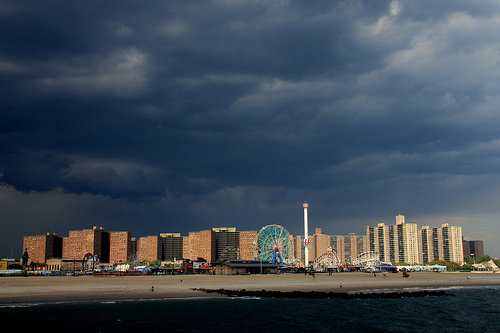
We are celebrating 15 years — and counting — of stories that are deeply researched and deeply felt, that build a historical record of what the city has been.
We are celebrating 15 years — and counting — of stories that are deeply researched and deeply felt, that build a historical record of what the city has been.

Photo by Flickr user Herschell Hershey
So, Mayor Bloomberg will be mayor for a third term. What will this mean for the architecture, planning and urban design that have received more policy attention from his administration than from previous ones? Thoughts, opinions, predictions? Send them our way.
Some will undoubtedly answer that question by pointing to megaprojects, such as Hudson Yards or Atlantic Yards, which have proved to be one of the pressure points of urban policy in the last eight years. A city always looking for creative ways to leverage market forces to develop local economies? A city in hock to developers? A city always reinventing itself? A city in paralysis? These themes and others are sure to be discussed at a major symposium taking place tomorrow convened by the Institute for Urban Design and its inimitable executive director, Omni-advisor Olympia Kazi. Arrested Development: Do Megaprojects Have a Future? will take place Saturday, November 7th at the Great Hall at Cooper Union, from 9:30am to 4:30pm. The roster of speakers – including stimulus-critic and train station aficionado Vishaan Chakrabarti – is a huge draw.
Another meeting of the minds that is sure to appeal to those of you passionate about transit is taking place at Barnard next week. Rights of Way: A New Politics of Movement in New York City will “examine the issues surrounding bikes and pedestrianization, and will explore sustainability, finance, public health, and the ways in which the street can serve as a fulcrum in debates about public space and urban life.” Next Thursday, November 12th in the James Room on the 4th floor of Barnard Hall (Broadway at W. 117th). Free and open to the public.
We’re always on the lookout for newfangled technologies and ideas, especially as they start getting installed and tested. East Londoners are the guinea pigs this time, as Pavegen Systems has installed a panel of energy-generating pavement on a busy stretch of sidewalk. The claim is that “just five slabs spread over a lively sidewalk has the ability to generate enough energy to illuminate a bus stop throughout the night,” so you can imagine the potential applications. The folks at MIT first brought this idea to our attention with their work on Crowd Farming, and it seems like harvesting energy from human motion is an approach ripe with possibilities. You can get all kinds of piezoelectric by dancing, driving, commuting, or even by walking through a door.
For one high-visibility project that we’ve been following, Coney Island, the question has been whether it will stay a mega-playground or become a mega-mall. The City came closer to ensuring that some of Coney’s most iconic amusements will remain in perpetuity with the Economic Development Corporation’s bid for the Wonderwheel.
Another way to fuse the recreational, architectural and the political is to… have a slumber party? An Arkitektur, a Berlin-based group of design radicals, will be hosting a live-in conference on Oppositional Architecture from the 12th to the 21st of November at a loft in Dumbo (Gair Building No 6, 81 Front Street). The discussions (and dinner parties) that will emerge while the group is in residence all critique the politics and production of space in capitalist society, and we’re especially looking forward to a discussion between economist David Kotz and architect Teddy Cruz on Saturday, November 14th. We were tipped off to this by Bryan Bell, who knows what it means to practice design as activism.
We’ll leave you with some further reading: Geoff Manaugh has tackled the question: Who would want to be an architect?, in response to an article by the same name in the Times. The piece is worth reading in its entirety, but here’s a taste that might spark interest in the Omni-fans out there: “architecture is the imaginative production of future worlds even as it is the act of building houses for the urban poor or the obtaining of technical skills necessary for rationally subdividing office floorplates.” If you’re on our site, you probably agree, and would expand the definition even more. Curiosity about the complexity of the architecture and design fields, and the infinite ways that design affects the world around us, is what gets us out of bed in the morning. Geoff concluded with a call for discussion – go join in.
The Roundup keeps you up to date with topics we’ve featured and other things we think are worth knowing about.
The views expressed here are those of the authors only and do not reflect the position of The Architectural League of New York.